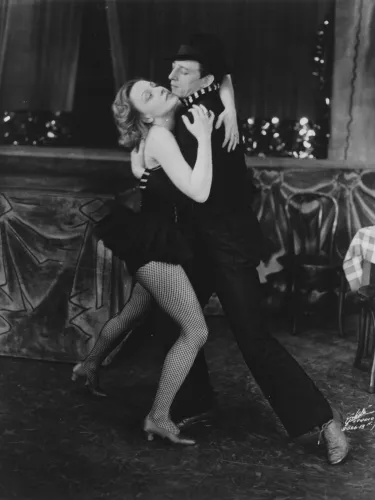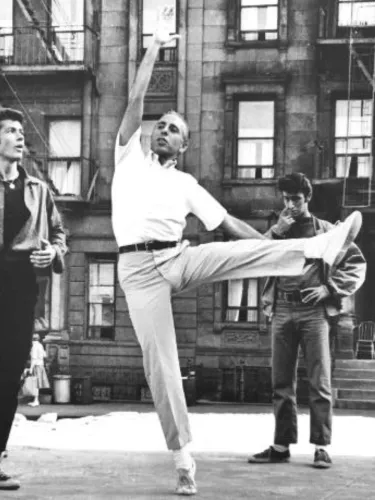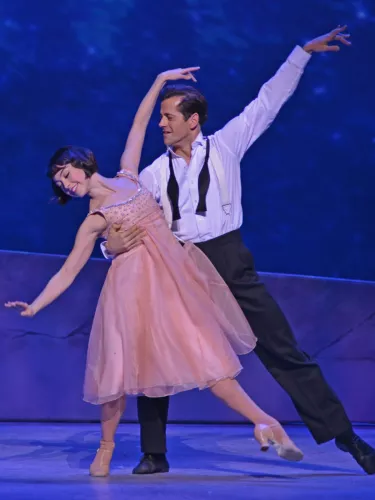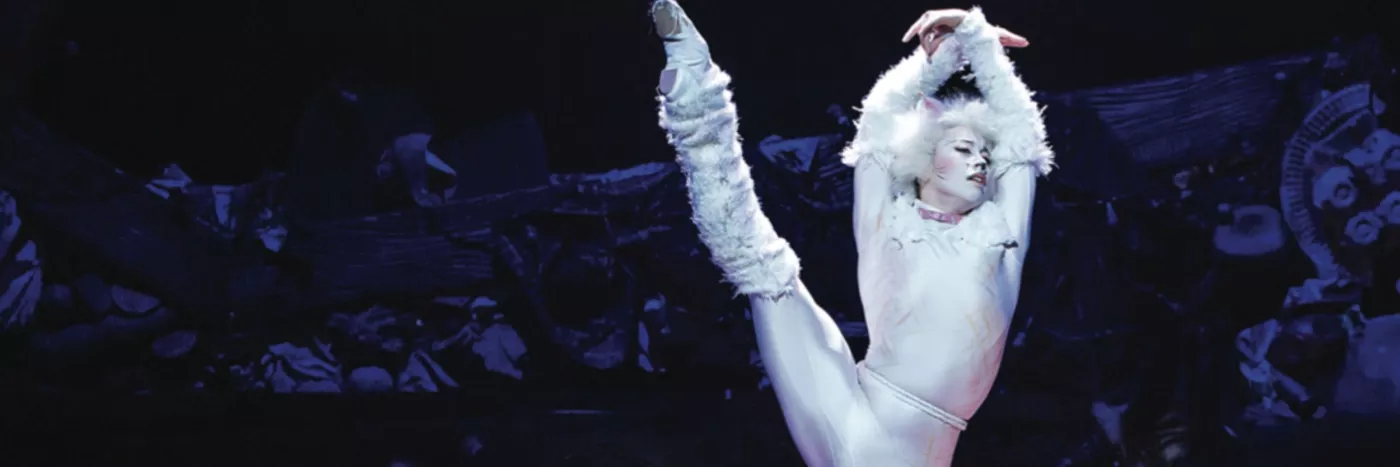From Ballet to Broadway Choreographers that made the switch
The 1975 musical A Chorus Line professed “everything is beautiful at the ballet”. To celebrate The Australian Ballet's premiere season of Christopher Wheeldon's Oscar, meet the classical ballet choreographers who took this sentiment to heart and put ballet under the bright lights of Broadway.
George Balanchine

Known for: On Your Toes
The choreographic genius behind some of the most popular and dazzling ballets of the 20th century (Jewels, Serenade, Symphony in C) lent his talent across the spectrum of performing arts, creating for ballet, opera, television, film, and of course, musical theatre.
After creating several pivotal works for Serge Diaghilev's Ballets Russes, Balanchine moved to the United States in the early 1930s to establish a permanent company. His first dance with Broadway came in 1936, when he was hired to choreograph works for the current crop of Ziegfield Follies, catching the attention of songwriting duo Rodgers and Hart who invited him to choreograph their musical, On Your Toes.
As the title of the show would suggest, the musical was set in the world of a ballet troupe and called for Balanchine to choreograph two major ballets that would be both visually beautiful and support the narrative.
After the success of On Your Toes, Balanchine choreographed a further three musicals for Rodgers and Hart: Babes in Arms, I Married an Angel and The Boys from Syracuse. Balanchine’s ability to blend classical dance and contemporary storytelling paved the way for the future choreographers on Broadway and raised the standard of dancing expected in musical theatre.
Agnes de Mille

Known for: Oklahoma!
Born into showbiz royalty, Agnes de Mille was the daughter of Hollywood director William C. de Mille and niece to Cecil B. de Mille (immortalised in Andrew Lloyd Webber's Sunset Boulevard and Billy Wilder's 1950 film of the same name). Even though her parents discouraged her from dance as a career option and refused to let her take classes, the universe would ultimately step in when Agnes’ sister Margaret was prescribed ballet for her fallen arches by a doctor. Agnes joined her and began her trajectory into dance lore.
Struggling to financially support herself as a dancer, it wasn’t until 1939 that de Mille would join the American Ballet Theatre. Her first success came in 1942 when she choreographed Rodeo for Ballet Russe de Monte Carlo. The following year, she collaborated with Rodgers and Hammerstein on the musical, Oklahoma! incorporating a classical ballet styled dream sequence at the end of Act I.
A pioneering choreographer, de Mille’s gift for storytelling used the choreography to support and convey the narrative, adding depth to her works.
De Mille was one of the earliest female directors on Broadway and would go on to choreograph Carousel, Gentlemen Prefer Blondes, Brigadoon and Paint Your Wagon.
Jerome Robbins

Known for: West Side Story and Fiddler on the Roof
If there’s anyone to blame for the concept of a “triple-threat,” it’s Jerome Robbins. Before he created the iconic West Side Story, many musicals would cast based on either singing or dancing ability. Robbins new style of storytelling through movement meant that future musical theatre wannabes would need to be able to sing, dance and act.
Robbins began his career as a classical dancer. He was a soloist with the American Ballet Theatre and was noticed for his performances as Benvolio in Romeo and Juliet and influenced by the choreography of George Balanchine and Michel Fokine.
In 1944, Robbins created and performed in the ballet Fancy Free. Featuring music from then up-and-coming composer Leonard Bernstein, Fancy Free would ultimately be adapted into the Broadway musical, On the Town.
In 1956, Robbins took William Shakespeare’s Romeo and Juliet from fair Verona to the Upper West Side of New York City. Featuring duelling gangs from different ethnic backgrounds, West Side Story was also scored by Leonard Bernstein, with Stephen Sondheim providing lyrics. After the success of West Side Story, Robbins would continue his run of hits with Gypsy and Fiddler on the Roof, and provided show saving contributions to A Funny Thing Happened on the Way to the Forum and Funny Girl.
For the remainder of his career, Robbins would alternate between classical and contemporary styles, creating and staging for the Joffrey Ballet and New York City Ballet alongside revivals of his most famous musicals.
In 2025, audiences can see Jerome Robbins' Glass Pieces as part of The Australian Ballet's triple-bill, Prism.
Gillian Lynne

Known for: CATS
When Gillian Lynne’s mother famously took her daughter to the doctor, worried about her lack of focus in school, she had no idea that this visit would ultimately change the dance world forever. The story goes that the doctor asked to speak to Gillian's mother privately, and putting on the radio, walked out of the room. When he asked her mother to look at her daughter who was now dancing to the music, he advised that there was nothing wrong with her focus, she was simply a dancer, and he encouraged her mother to take her to dance lessons.
Lynne’s natural talent garnered the attention of Ninette de Valois, who took her to Sadler’s Wells (now The Royal Ballet) alongside Margot Fonteyn and Moira Shearer. After a successful career as a principal artist at The Royal Ballet, Lynne took her talent to the other side of the stage, choregraphing productions across the West End and Broadway.
However it was Andrew Lloyd Webber’s musical based on TS Eliot’s Old Possum’s Book of Practical Cats, that cemented her status on Broadway in 1981. CATS would become the longest-running show in Broadway history, only surpassed by another Lloyd Webber creation also choreographed by Lynne, The Phantom of the Opera in 2006.
Justin Peck

Known for: Carousel
The second ever Resident Choreographer of New York City Ballet, Justin Peck’s illustrious resume includes the choreography for the 2021 Steven Spielberg directed movie-musical West Side Story. Based on Jerome Robbins' original stage production, Peck’s choreography pays homage to the original but takes on a bold new intensity that works within the realistic filmic approach. A student of the School of American Ballet, Peck joined the New York City Ballet in 2006, performing a vast repertoire from George Balanchine to Alexei Ratmansky and Twyla Tharp. In 2018, Peck choreographed the Broadway revival of Rodgers and Hammerstein’s Carousel, winning his first Tony Award for Best Choreography. In 2023, Peck choregraphed the ‘dream ballet’ sequence in the Bradley Cooper film based on the life of Leonard Bernstein, Maestro. He won a second Tony Award for Best Choreography in 2024 for his original production, Illinoise, based on the Sufjan Stevens album Illinois.
Justin Peck on West Side StoryWe have to remember that it is still a musical and that there's a unique kind of expression that exists in it.
Christopher Wheeldon

Known for: An American in Paris and MJ the Musical
Before Christopher Wheeldon was choreographing and creating Tony Award-winning musicals including An American in Paris and MJ The Musical, he was a professional ballet dancer. Wheeldon trained at The Royal Ballet School and joined The Royal Ballet company in 1991 before moving to New York City Ballet and being promoted to the rank of soloist in 1998. In 2001, Wheeldon became New York City Ballet’s inaugural resident choreographer before returning to The Royal Ballet in 2012 where he created many works including Alice’s Adventures in Wonderland© and The Winter’s Tale.
His latest work is a classical ballet based on the life and stories of 19th-century writer Oscar Wilde that includes elements derived from musical theatre including a live operatic performance. Oscar opens at Sydney Opera House 8 November 2024.
